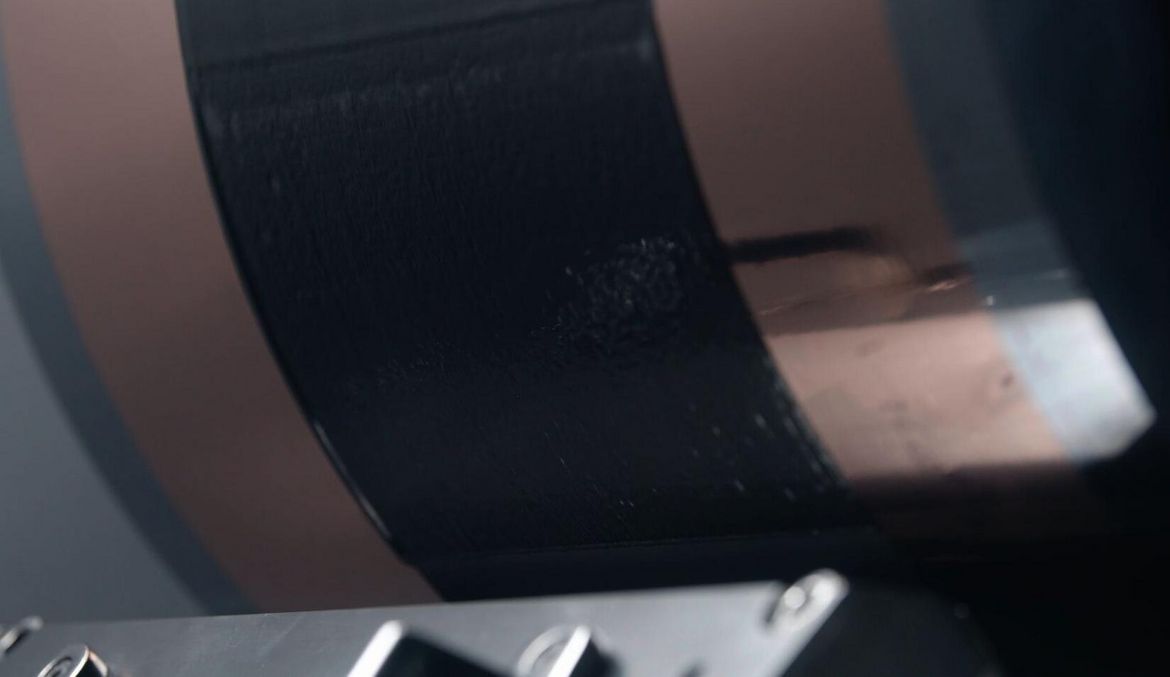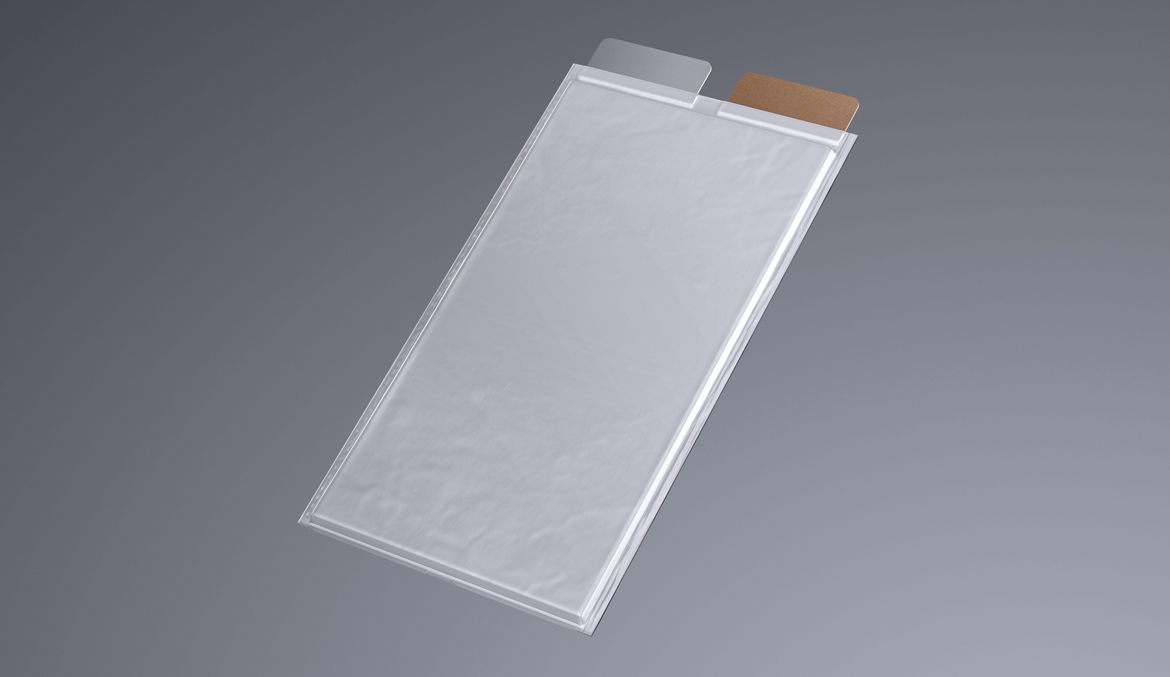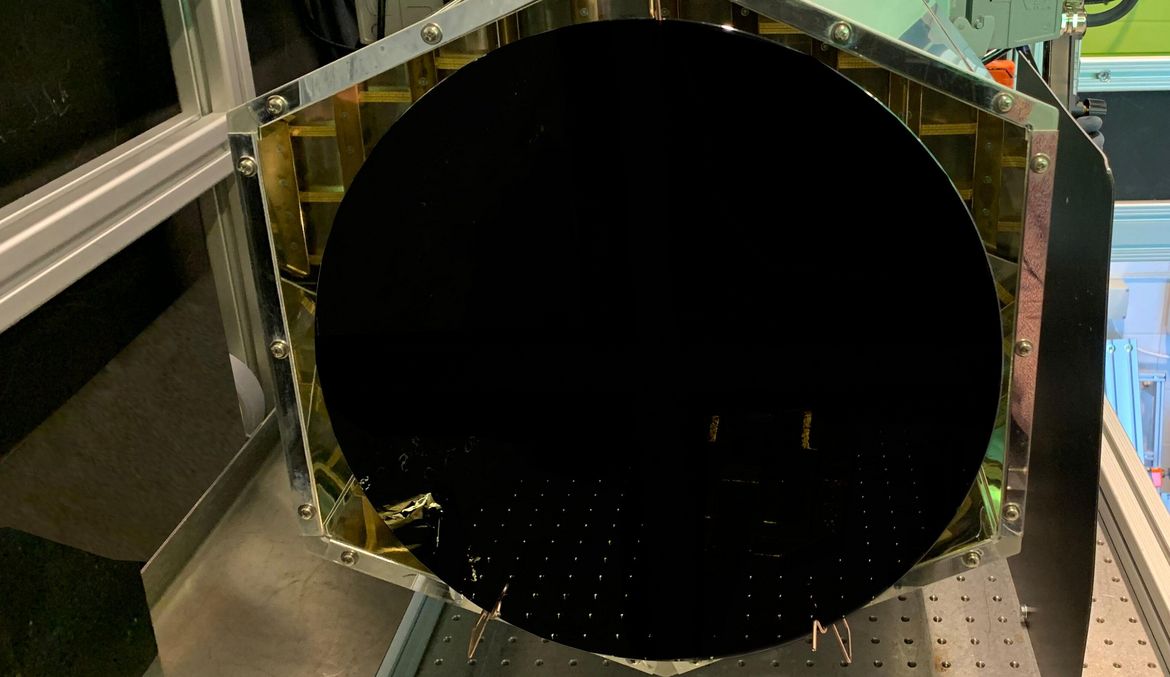Benefit from direct and homogenous heat treatment of large target areas, as well as from a high tolerance to back-reflections. Thanks to the high irradiance of over 100 W/cm², the TruHeat VCSEL systems can achieve high process speeds.
Industrial TruHeat VCSEL systems
Beam sources based on VCSEL arrays are able to heat large surfaces with directed wavelength-selective infrared radiation. The TruHeat VCSEL systems are used in numerous industrial heating processes. Due to direct irradiation of the treatment surface, significant cost benefits can be achieved compared to conventional laser systems, without expensive optics or scanner systems. The unique thing about the systems is that, in addition to the precise control and fast switch-over of the infrared output, the spatial heating profile can also be programmed as needed through independent control of small segments of the laser modules. The heating patterns can even change dynamically during operation. This enables unparalleled process flexibility.
Benefit from a scalable output power in the kW range.
Achieve a high process speed with irradiance of 100 W/cm².
Individual emission zones of the VCSEL beam source can be controlled independently of one another.
The robust and compact laser modules can be integrated easily into industrial systems and production processes.

E-Mobility: Drying of battery foils
Battery foils must be dried after the coating process to recover the solvent from the active material. Industrial VCSEL heating systems can take over this step, because laser sources based on VCSEL arrays are able to heat large areas with directed wavelength-selective infrared radiation.

E-Mobility: Pouch Sealing
Using VCSEL laser for the sealing/welding of pouch cells increase the quality and reduce the process time. A higher peel-off force can also be achieved.

Local softening of body steel in the automotive industry
VSCEL heating modules make it quick and easy to selectively soften high-tensile steel parts. This has many benefits, particularly in automotive production.

Photovoltaics
VCSEL laser can support the Si wafer heating, as VCSEL heating modules enable a very homogeneous heating. Also the excellent local control of the temperature profile lead towards higher quality of the wafer.Typical heating rate is 45 degree / sec, but also faster heating rates (up to 260 degree / sec) can be achieved by using higher power.

Additive Manufacturing
When large high parts should be printed, thermal gradients will occur in sintered parts. The stress can be minimized by VCSEL top heating.

Fast joining of large plastic parts in furniture board production
Benefit from quick welding of large plastic parts due to high irradiance in the homogenously irradiated heating zone. Integration is very easy due to the small dimensions of the module.
|
TruHeat VCSEL 3010 (2.4 kW)
Compare product
|
TruHeat VCSEL 3010 (9.6 kW)
Compare product
|
TruHeat VCSEL 3010 (19.2 kW)
Compare product
|
TruHeat VCSEL 3015
Compare product
|
TruHeat VCSEL 3012
Compare product
|
|
|---|---|---|---|---|---|
| Laser parameters | |||||
| Wavelength | 980 nm | 980 nm | 980 nm | 980 nm | 980 nm |
| Laser power | 2.4 kW | 9.6 kW | 19.2 kW | 6.4 kW | 6 kW |
| Beam angle | Typically with 10° (at 95% power) | Typically with 10° (at 95% power) | Typically with 10° (at 95% power) | Typically with 10° (at 95% power) | Typically with 10° (at 95% power) |
| Number of zones | 12 pieces | 48 pieces | 96 pieces | 96 pieces | 30 pieces |
| Emission range | 40 x 52 mm2 | 40 x 208 mm2 | 417.5 x 38 mm2 | 199.1 x 38 mm2 | 521.6 x 25.3 mm2 |
| Irradiance | typisch 115 W/cm2 | typisch 115 W/cm2 | typisch 115 W/cm2 | typisch 115 W/cm2 | typisch 115 W/cm2 |
| Laser class | 4 | 4 | 4 | 4 | 4 |
| Optics | |||||
| Optical element | Optionally with focusing or scattering optics | Optionally with focusing or scattering optics | Optionally with focusing or scattering optics | Optionally with focusing or scattering optics | Optionally with focusing or scattering optics |
| Protective glass |
Double safety screen, anti-reflective coated |
Double safety screen, anti-reflective coated |
Double safety screen, anti-reflective coated |
Double safety screen, anti-reflective coated |
Double safety screen, anti-reflective coated |
| Size | |||||
| Width dimension | 87 mm | 87 mm | 112.7 mm | 93 mm | 133.5 mm |
| Height dimension | 48 mm | 48 mm | 113 mm | 100 mm | 87 mm |
| Depth dimension | 108 mm | 264 mm | 563 mm | 319 mm | 652 mm |
| Driver unit | |||||
| Number of driver units | 1 pieces | 4 pieces | 1 pieces | 1 pieces | 1 pieces |
| Laser control | Typically with 10 ms time constant; individual control of laser emission zones; integrated laser monitoring | Typically with 10 ms time constant; individual control of laser emission zones; integrated laser monitoring | Typically with 10 ms time constant; individual control of laser emission zones; integrated laser monitoring | Typically with 10 ms time constant; individual control of laser emission zones; integrated laser monitoring | Typically with 10 ms time constant; individual control of laser emission zones; integrated laser monitoring |
| Machine interface | Ethernet-based (EtherCAT® protocol) | Ethernet-based (EtherCAT® protocol) | Ethernet-based (EtherCAT® protocol) | Ethernet-based (EtherCAT® protocol) | Ethernet-based (EtherCAT® protocol) |
| Power supply | 400V (±10%) between 3 phases, 47-63 Hz | 400V (±10%) between 3 phases, 47-63 Hz | 400V (±10%) between 3 phases, 47-63 Hz | 400V (±10%) between 3 phases, 47-63 Hz | 400V (±10%) between 3 phases, 47-63 Hz |
| Installation | |||||
| Ambient temperature | 5 - 40 °C | 5 - 40 °C | 5 - 40 °C | 5 - 40 °C | 5 - 40 °C |
| Humidity (max.) | Non-condensing for cooling water temperature of 20 °C | Non-condensing for cooling water temperature of 20 °C | Non-condensing for cooling water temperature of 20 °C | Non-condensing for cooling water temperature of 20 °C | Non-condensing for cooling water temperature of 20 °C |
| Chiller | Cooling device with water-water or water-air heat exchanger required | Cooling device with water-water or water-air heat exchanger required | Cooling device with water-water or water-air heat exchanger required | Cooling device with water-water or water-air heat exchanger required | Cooling device with water-water or water-air heat exchanger required |
|
TruHeat VCSEL 3010 (2.4 kW)
|
TruHeat VCSEL 3010 (9.6 kW)
|
TruHeat VCSEL 3010 (19.2 kW)
|
TruHeat VCSEL 3015
|
TruHeat VCSEL 3012
|
|
|---|---|---|---|---|---|
| Laser parameters | |||||
| Wavelength | 980 nm | 980 nm | 980 nm | 980 nm | 980 nm |
| Laser power | 2.4 kW | 9.6 kW | 19.2 kW | 6.4 kW | 6 kW |
| Beam angle | Typically with 10° (at 95% power) | Typically with 10° (at 95% power) | Typically with 10° (at 95% power) | Typically with 10° (at 95% power) | Typically with 10° (at 95% power) |
| Number of zones | 12 pieces | 48 pieces | 96 pieces | 96 pieces | 30 pieces |
| Emission range | 40 x 52 mm2 | 40 x 208 mm2 | 417.5 x 38 mm2 | 199.1 x 38 mm2 | 521.6 x 25.3 mm2 |
| Irradiance | typisch 115 W/cm2 | typisch 115 W/cm2 | typisch 115 W/cm2 | typisch 115 W/cm2 | typisch 115 W/cm2 |
| Laser class | 4 | 4 | 4 | 4 | 4 |
| Optics | |||||
| Optical element | Optionally with focusing or scattering optics | Optionally with focusing or scattering optics | Optionally with focusing or scattering optics | Optionally with focusing or scattering optics | Optionally with focusing or scattering optics |
| Protective glass |
Double safety screen, anti-reflective coated |
Double safety screen, anti-reflective coated |
Double safety screen, anti-reflective coated |
Double safety screen, anti-reflective coated |
Double safety screen, anti-reflective coated |
| Size | |||||
| Width dimension | 87 mm | 87 mm | 112.7 mm | 93 mm | 133.5 mm |
| Height dimension | 48 mm | 48 mm | 113 mm | 100 mm | 87 mm |
| Depth dimension | 108 mm | 264 mm | 563 mm | 319 mm | 652 mm |
| Driver unit | |||||
| Number of driver units | 1 pieces | 4 pieces | 1 pieces | 1 pieces | 1 pieces |
| Laser control | Typically with 10 ms time constant; individual control of laser emission zones; integrated laser monitoring | Typically with 10 ms time constant; individual control of laser emission zones; integrated laser monitoring | Typically with 10 ms time constant; individual control of laser emission zones; integrated laser monitoring | Typically with 10 ms time constant; individual control of laser emission zones; integrated laser monitoring | Typically with 10 ms time constant; individual control of laser emission zones; integrated laser monitoring |
| Machine interface | Ethernet-based (EtherCAT® protocol) | Ethernet-based (EtherCAT® protocol) | Ethernet-based (EtherCAT® protocol) | Ethernet-based (EtherCAT® protocol) | Ethernet-based (EtherCAT® protocol) |
| Power supply | 400V (±10%) between 3 phases, 47-63 Hz | 400V (±10%) between 3 phases, 47-63 Hz | 400V (±10%) between 3 phases, 47-63 Hz | 400V (±10%) between 3 phases, 47-63 Hz | 400V (±10%) between 3 phases, 47-63 Hz |
| Installation | |||||
| Ambient temperature | 5 - 40 °C | 5 - 40 °C | 5 - 40 °C | 5 - 40 °C | 5 - 40 °C |
| Humidity (max.) | Non-condensing for cooling water temperature of 20 °C | Non-condensing for cooling water temperature of 20 °C | Non-condensing for cooling water temperature of 20 °C | Non-condensing for cooling water temperature of 20 °C | Non-condensing for cooling water temperature of 20 °C |
| Chiller | Cooling device with water-water or water-air heat exchanger required | Cooling device with water-water or water-air heat exchanger required | Cooling device with water-water or water-air heat exchanger required | Cooling device with water-water or water-air heat exchanger required | Cooling device with water-water or water-air heat exchanger required |
The technical data of all product versions as a download.

PPM4xxx
VCSEL module designed for lower power densities at higher width. Especially for drying foils this type is recommended.
Control software for TruHeat VCSEL systems

Basic Driver Control Software
The basic version of the control software offers the function of manually controlling the laser channels of the TruHeat VCSEL system and of setting the power.

Advanced Driver Control Software
The extended control software version is based on the basic version and offers additional functions such as temperature control or pulsing. In addition, time and performance profiles can be created. These can be used to vary the power of the TruHeat VCSEL system during the processing time.
The heat density of TruHeat VCSEL systems can be influenced with additional lenses. The irradiance of VCSEL heating modules can be increased with positive lenses. The use of negative lenses decreases the irradiance of the modules.
The Air Knife can be used to keep spatter and steam away from the protective glass of the laser system. It creates a protective airflow in front of the laser.
Mounting brackets simplify the technical assembly of a TruHeat VCSEL system.
A TruHeat VCSEL system with less tightly packed emitters and a defocusing lens can be used for applications requiring less irradiance.
This product range and information may vary depending on the country. Subject to changes to technology, equipment, price, and range of accessories. Please get in touch with your local contact person to find out whether the product is available in your country.










